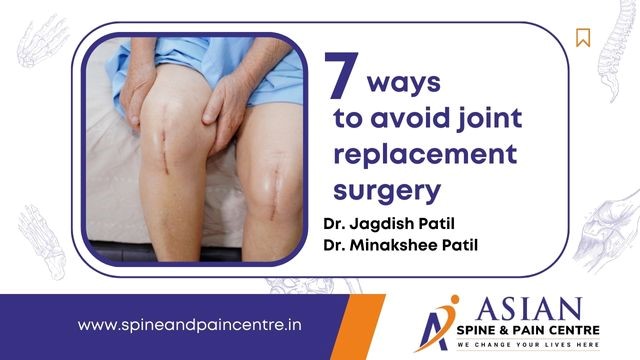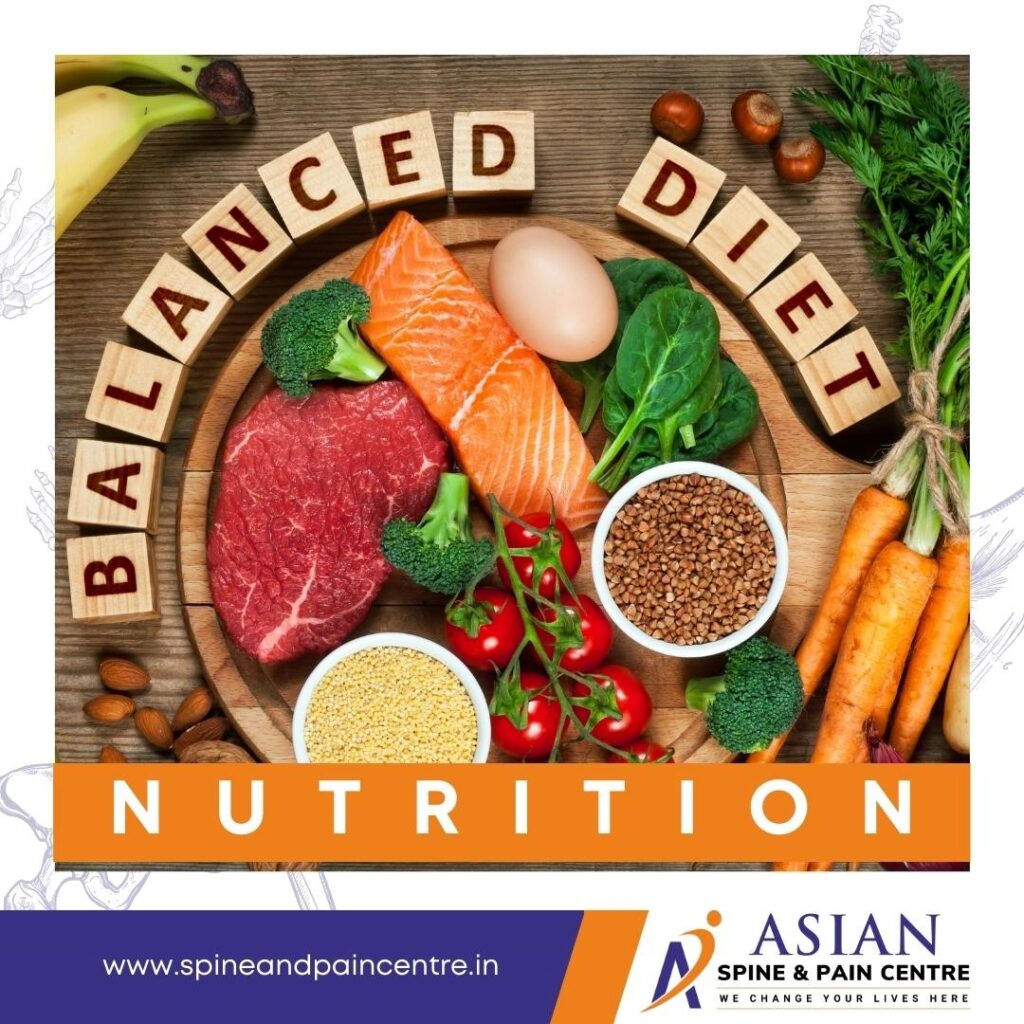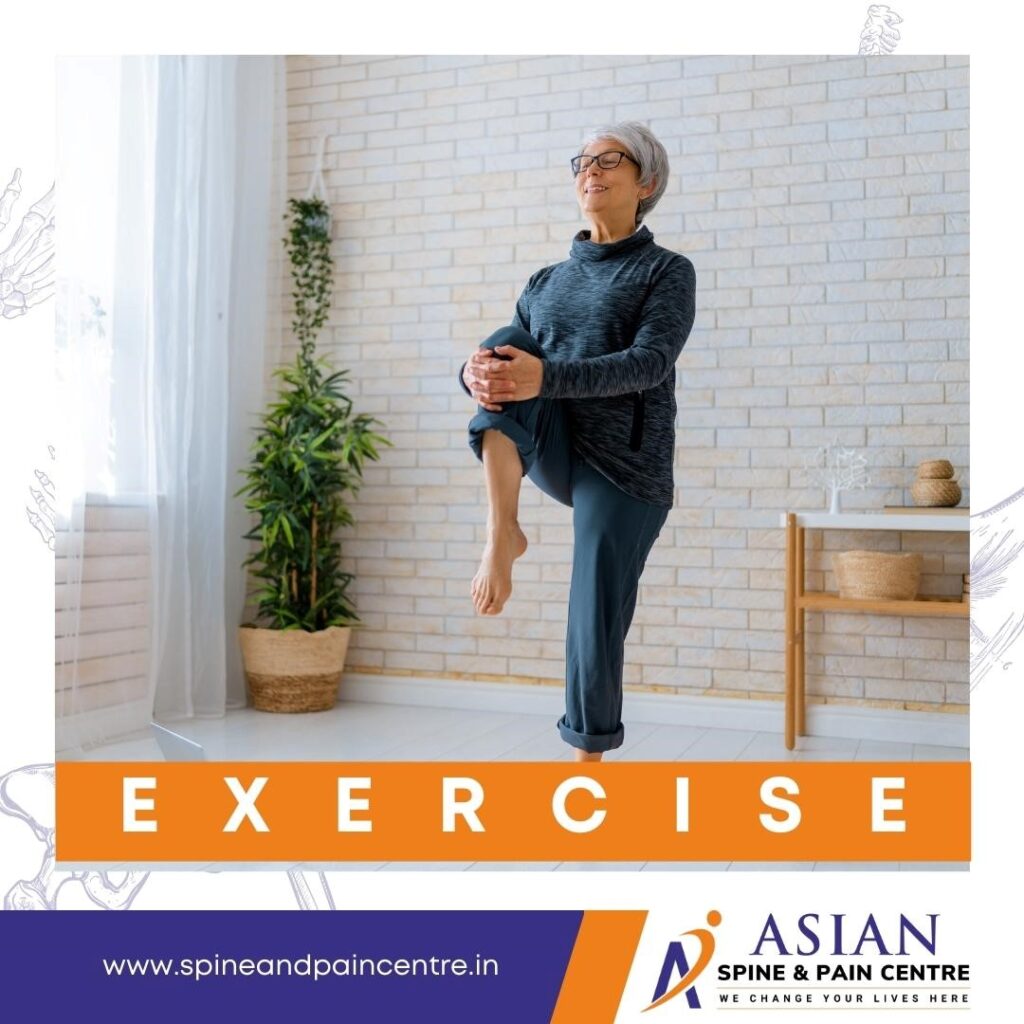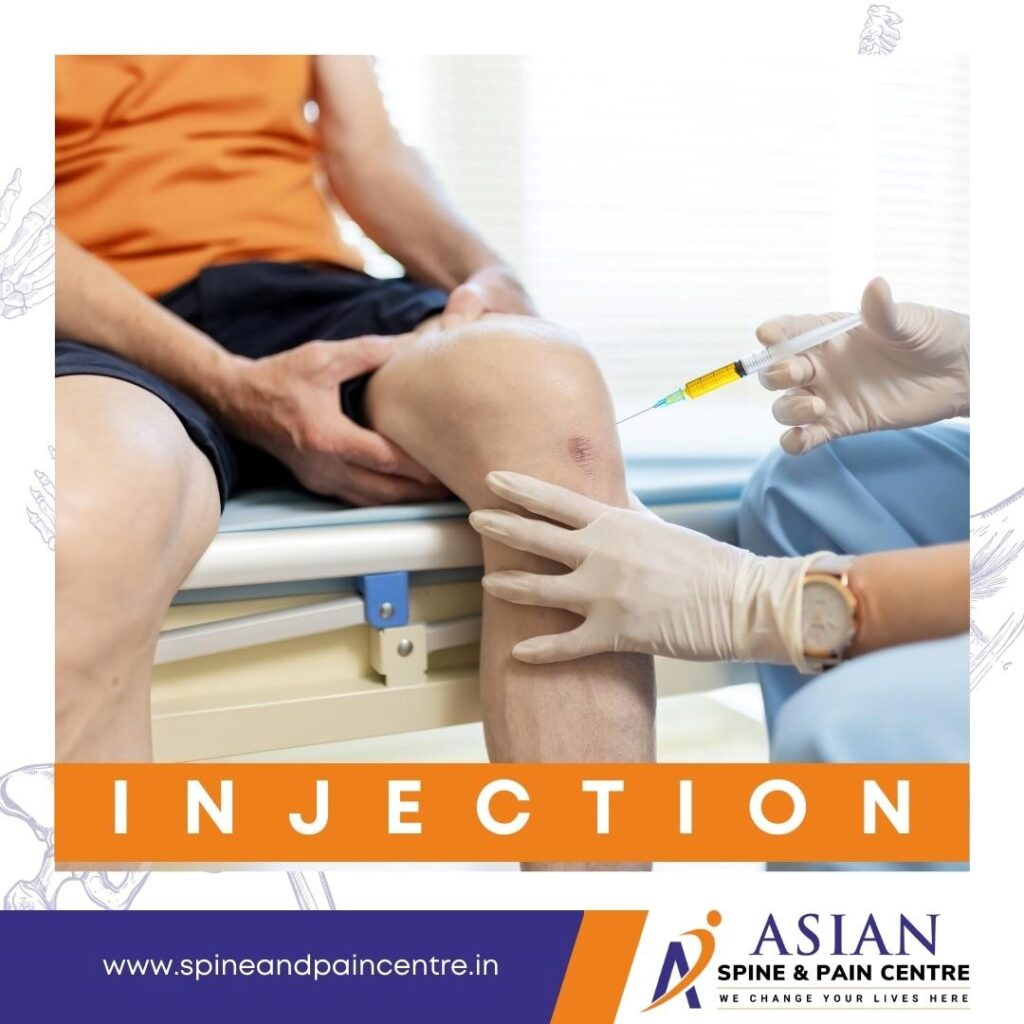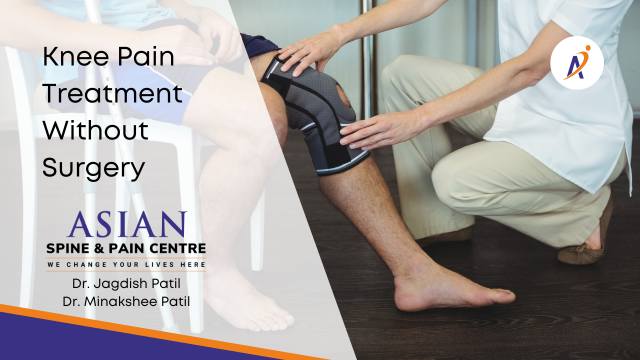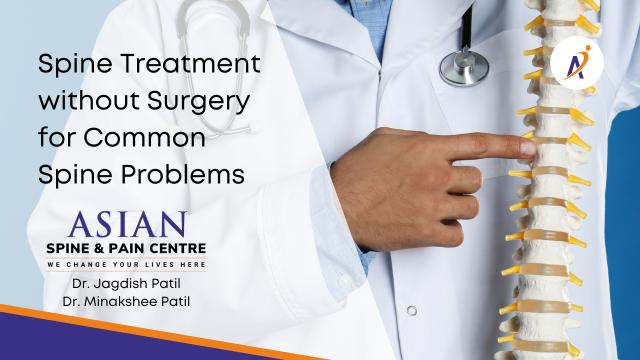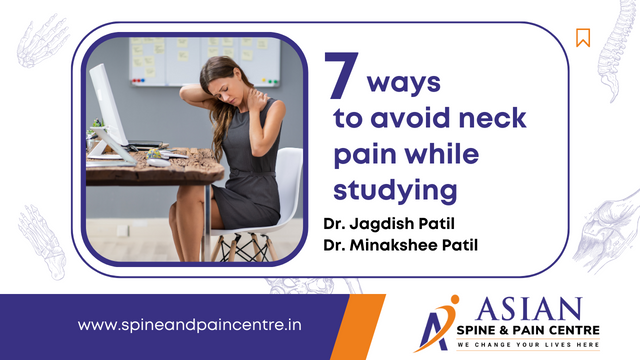Dr. Jagdish Patil & Dr. Minakshee Patil provides spine treatment without Surgery for common spine problems like spinal stenosis, herniated disc, sciatica, arthritis in Pune.
Quick Service Request
Get call from our clinic
Avoid joint replacement surgery with the help of our expert orthopedic doctor’s treatment plan. More than 90% patients with chronic joint pain of knee, hip or any other joint can avoid joint replacement surgery. So even if you have been advised with the one, consult Dr. Jagdish Patil for the second opinion before you decide to undergo surgeon’s knife.
In this blog, you’ll learn everything you need to know about endoscopic spine surgery, including the risks, benefits, success rate and recovery time.
Why people need joint replacement surgery? And can you really avoid joint replacement?
There are numerous changes that occur in our bodies as we age. Our bodies experience regular wear and tear as we age, which might lead to future difficulties. Joint pain is one such consequence. Some people have acute pain in their joints as they age, making daily life activities challenging.
There are numerous causes of joint pain, but the most common are arthritis, bursitis, lupus, gout, infectious infections, an injury, and so on. Only surgery can relieve discomfort and increase patients’ mobility in severe situations.
Is surgery, however, the only choice for such joint replacement surgeries? Is it possible to avoid joint replacement surgeries?
This blog discusses some clever methods for avoiding hip or knee replacement surgery.
Here are the 7 ways to avoid joint replacement surgery:
1. Controlling weight:
Excess body weight puts a lot of strain on the joints, causing cartilage to break down. This extra bodyweight exerts strain on the hips and knees, causing the patient to experience joint pain. Even a 5% reduction in total weight can relieve the pressure and agony.
2. Eating a balanced diet:
Along with lowering excess weight by eating fewer and healthier foods, nutrition plays an important role in joint strength. A healthy diet will enhance the calcium in the bones while also protecting the cartilage. Green leafy vegetables, soya, almonds, omega-3 fatty acids, and other foods should be included in your diet.
3. Maintaining physical activity:
Staying active by exercising on a regular basis helps to reduce pressure on the bones while also strengthening them. Patients suffering from joint discomfort should engage in physical exercise since it stimulates the release of synovial fluid and provides nutrients to lubricate the cartilage. Aerobic exercises, lightweight training, cycling, walking, swimming, and other forms of physical activity will assist patients maintain their joint health.
4. Joint injections:
Some joint injections can assist improve joint movement while also lowering discomfort. Joint injections with cortisone or hyaluronic acid function as non-surgical therapeutic alternatives for knee and hip discomfort. Plasma therapy can also help with knee pain. In addition, Botox injections can give you some time before surgery by decreasing knee osteoarthritis discomfort.
5. Pain relievers:
Some drugs can help reduce joint discomfort. These medications should only be taken on the advice of your orthopedic surgeon. Some over-the-counter medications, such as acetaminophen or ibuprofen, can help relieve discomfort. However, if you do not experience pain relief after taking these medications, your doctor may prescribe stronger medications.
6. Electrical Stimulation:
Specially designed medical equipment can assist in strengthening the front thigh muscles and stabilizing the knee. Pain in the joint can be lessened and treated in this manner. This electrical stimulation may also aid in cartilage cell regeneration.
7. Bracelets:
If your doctor believes that braces on your knees are necessary, he may prescribe them. Your doctor will always prescribe these braces, and they will be fitted by a physical therapist. The use of these braces on the knees improves knee alignment while also alleviating pain.
So there are certain medications, injections and non-surgical treatment options like electrical stimulation will require expert doctor’s intervention. With these modern developments in pain management can help you relieve pain and avoid joint replacement surgery.
Where can you really avoid joint replacement in pune?
At Asian Spine & Pain Centre, Dr. Jagdish Patil & Dr. Minakshee Patil will help you overcome pain and avoid joint replacement surgery, by using most advanced treatment options available in India.
Asian Spine & Pain Centre
We change your lives here!
Asian
Spine And Pain Centre
Asian Spine And Pain Centre
We change your lives here!
Dr. Jagdish Patil
M.B.B.S., M.S.(Orth), FIIPM, FIMISS
Endoscopic Spine & Joint Replacement Surgeon
Pain management Expert
Dr. Minakshee Patil
M.B.B.S., M.D., FPCI, FIPM
Interventional Pain Management Expert
Latest articles
Dr. Jagdish Patil & Dr. Minakshee Patil provides spine treatment without Surgery for common spine problems like spinal stenosis, herniated disc, sciatica, arthritis in Pune.
Follow these 7 simple steps suggested by best pain management expert, Dr. Jagdish Patil, to avoid neck pain while studying long hours.
“World Class Super Speciality Centre for Spine, Joints, Pain & Regenerative Therapies”
Let's Connect
+91-7218113113
Main Clinic
304, 3rd Floor, Choice ‘C’ Apartment, Opp. Millennium Star building, Near Ruby Hall Clinic, Pune 411001.
Send A Mail
asian.spineandpaincentre
@gmail.com
Our facilities
Physiotherapy
Procedure Room
Pharmacy
X-ray & Imaging room
Emergency Care
Online Consultancy
FAQs:
Yes, in more than 90% cases with chronic knee pain, a noninvasive or minimal invasive procedures can be used to avoid surgeries. But in 10% cases, surgery is unavoidable and can provide long term benefit. So trust our experts at Asian Spine & pain Centre to provide accurate diagnosis and pain management treatment for your chronic knee pain.
The goal / aim of sports medicine is to maintain, sustain, and at times to regain peak physical fitness i.e., adaptability to stress, physical and mental. Main functions of sports medicine are promotive, educative, formative, recreative, competitive, therapeutic and rehabilitative in nature. At Asian Spine & Pain Centre, we provide complete care of sport sports injuries for athletes in Pune.
Yes, in most cases, physiotherapy is must to regain complete joint mobility and muscular strength. It can be required after any orthopedic treatment either surgical or non-surgical. At Asian Spine & pain Centre, we have a tea, of experienced physiotherapists to provide complete care.
You might have serious back problem or emergency for which you need immediate orthopedic care. Following signs can help you to identify these serious situations – Sharp pain rather than a dull ache, Radiating pain, Sudden weakness in the legs, incontinence, numbness or needle like pain in the groin.
Yes. X-rays are often a good tool for determining if arthritis exists and, specifically, what type. Common types of arthritis include rheumatoid arthritis, psoriatic arthritis, and osteoarthritis. Early in the disease process, more sophisticated imaging may be necessary, especially MRI. We do provide X-ray imaging services at Asian Spine & Pain Centre.
If you’re experiencing chronic pain, a doctor may recommend that you have a nerve block, a temporary or permanent procedure that disrupts specific nerve activity. It can help diagnose or treat certain types of neuropathic pain, or pain caused by nerve dysfunction or damage. At Asian Spine & pain centre, we use nerve block therapy in selected cases of chronic pain.
As is often the case, recovery time can vary from person to person depending on the location of the surgery, the type of surgery required and the lifestyle of the patient. However, most patients are able to leave the hospital the same day and are typically able to return to their active lives within 4-6 weeks after surgery. However, some are back to normal in 1-2 weeks.
You shouldn’t downhill ski or play contact sports such as football and soccer. In general, avoid sports that require jerking, twisting, pulling, or running. You should be able to do lower-impact activities, such as hiking, gardening, swimming, playing tennis, and golfing.
Arthroscopy is a procedure for diagnosing and treating joint problems. A surgeon inserts a narrow tube attached to a fiber-optic video camera through a small incision — about the size of a buttonhole. The view inside your joint is transmitted to a high-definition video monitor. Arthroscopy allows the surgeon to see inside your joint without making a large incision. Surgeons can even repair some types of joint damage during arthroscopy, with pencil-thin surgical instruments inserted through additional small incisions.

